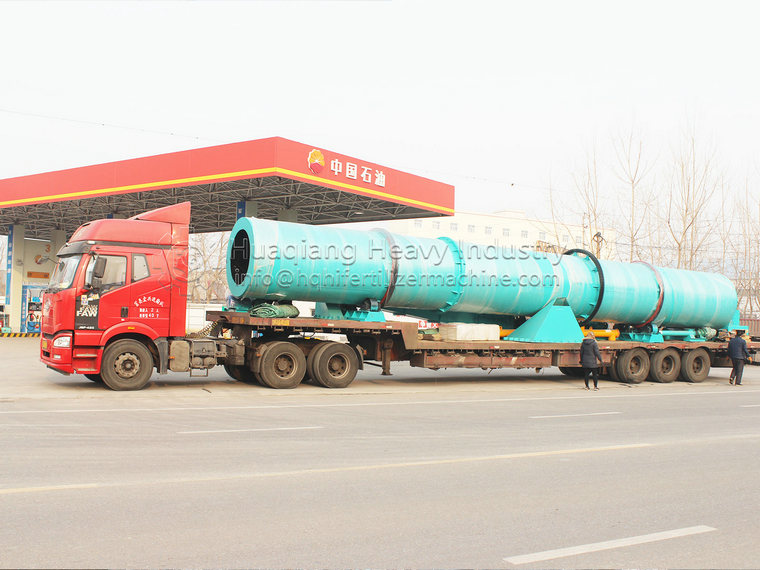The organic fertilizer rotary dryer is a commonly used drying equipment in organic fertilizer production lines, and the material filling rate during the drying process is related to the production efficiency of drying organic fertilizers.
The filling rate of materials in the organic fertilizer rotary dryer is equal to the ratio of the volume of materials in the organic fertilizer dryer to the calibrated volume of the dryer. When determining the filling rate of materials, two situations are generally considered: air flow (ventilation) and no air flow (no wind). For situations with air flow, it is also necessary to consider that the contact mode between the hot air and the material is countercurrent yellow stone flow.
The particle movement law in the organic fertilizer dryer during ventilation is different from that in the absence of wind. Due to the flow of air, there is a significant difference in the axial movement of particles in the dryer. When flowing in reverse, the particle velocity decreases, while when flowing in parallel, the particle velocity increases.
The heat source of the organic fertilizer drying equipment for chicken manure and duck manure processing comes from the combustion device, and this drying machine adopts a downstream heating method. Therefore, the materials that need to be dried are pushed back by the spiral cutting plate from the feeding box and the feeding chute into the cylinder. Due to the inclined placement of the dryer, on one hand, the material flows towards the rear under the action of gravity and rotation, and on the other hand, the material is repeatedly picked up by the copying board, carried to the upper end and continuously sprinkled down, forming a uniform curtain inside the cylinder, fully exchanging heat with the hot air flow inside the cylinder. As the material is repeatedly sprinkled, the moisture contained is gradually dried, achieving the goal of drying.